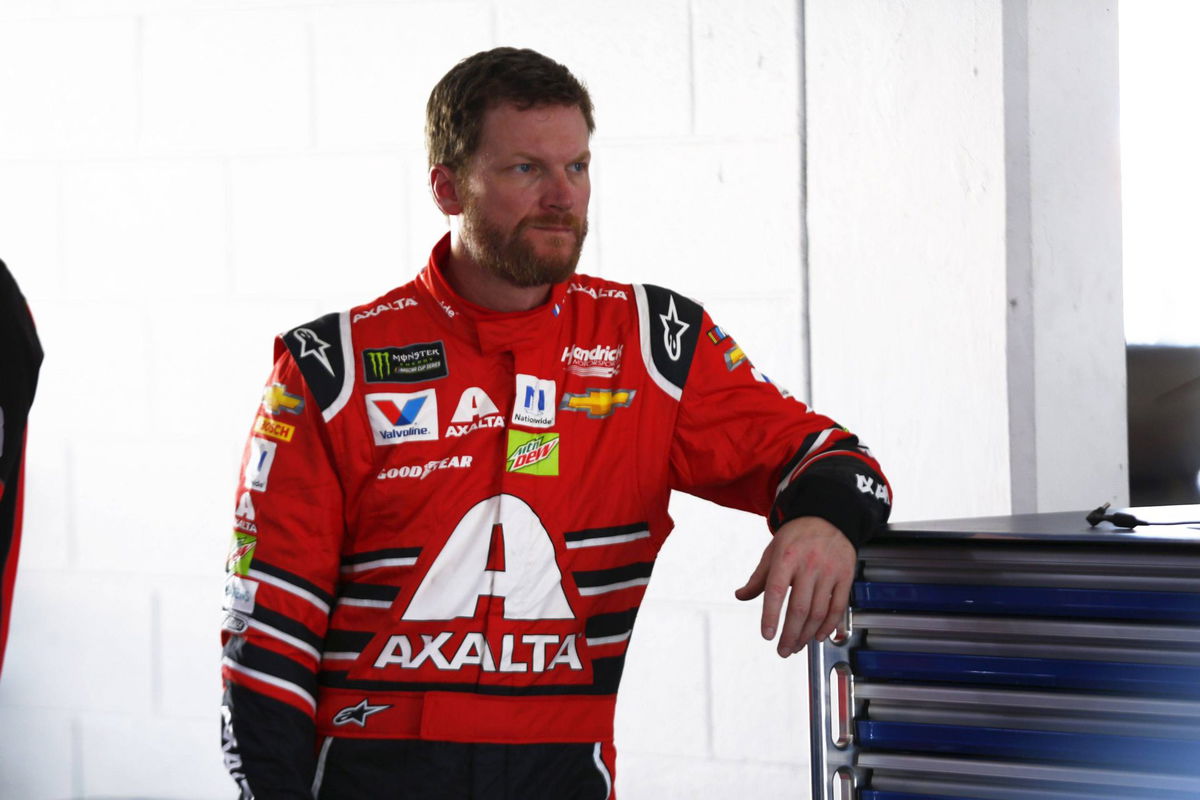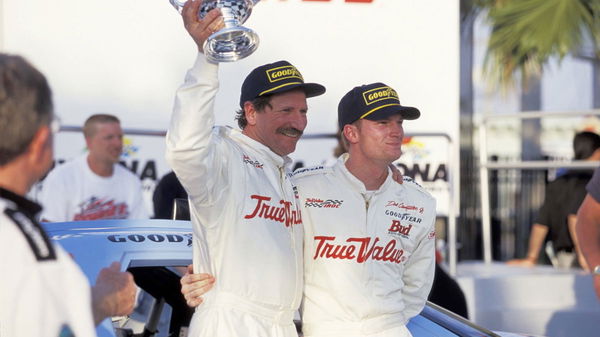
Imago
November 17, 2017 – Homestead, Florida, United States of America – November 17, 2017 – Homestead, Florida, USA: Dale Earnhardt Jr. (88) hangs out n the garage prior to practice for Ford EcoBoost 400 at Homestead-Miami Speedway in Homestead, Florida. NASCAR Motorsport USA 2017: Monster Energy NASCAR Cup Series Ford EcoBoost 500 November 17 – ZUMAa161 20171117_zaa_a161_019 Copyright: xJustinxR.xNoexAspxIncx

Imago
November 17, 2017 – Homestead, Florida, United States of America – November 17, 2017 – Homestead, Florida, USA: Dale Earnhardt Jr. (88) hangs out n the garage prior to practice for Ford EcoBoost 400 at Homestead-Miami Speedway in Homestead, Florida. NASCAR Motorsport USA 2017: Monster Energy NASCAR Cup Series Ford EcoBoost 500 November 17 – ZUMAa161 20171117_zaa_a161_019 Copyright: xJustinxR.xNoexAspxIncx
Many still believe that NASCAR peaked in the early 2000s. What had started as a pastime sport had gone national, with tracks seating more fans than some of the biggest football stadiums. The ratings even surpassed Major League Baseball in some regions, and stock car racing was well on its way to surpass the likes of the NHL, NBA, and NFL. The sport had even signed a lucrative $2.4 billion TV contract, and the 2001 Daytona 500 was the first race that was aired under the new terms. But February 18, 2001, changed everything.
Watch What’s Trending Now!
Dale Earnhardt tragically lost his life, and NASCAR underwent an overnight transformation. The sport became less distinctively Southern and attempted to make itself more commercially appealing. And with Junior stepping into some big boots, the consequences of those decisions hurt the sport for a long time.
ADVERTISEMENT
Article continues below this ad
Mark Martin sheds light on NASCAR’s failures
As one might expect, Dale Earnhardt’s death shook the NASCAR world, bringing sweeping changes that prioritized drivers’ safety. Gary Nelson, then managing director of competition, brought what was called the ‘Car of Tomorrow’. It was four inches wider and two inches taller than the previous standard and was deliberately slower with a more upright windshield to increase drag. It debuted in 2007, and fans hated it. They called it “a flying brick with a wing.”
Discussing the situation, Kenny Wallace made it clear that the conversation was dedicated to “old” people. Mark Martin, who was a guest on the Kenny Conversation podcast, weighed in on the car’s criticism, saying, “I think the drivers bashing the cars didn’t help. I don’t think there should be a narrative. I don’t think that something should be put out, and this is what you follow. But I don’t think we did ourselves any favor. NASCAR did, you know, in general, give it any favors with bashing the cars so bad.” Kyle Busch, who was one of the first drivers to win in the car, didn’t hold back, saying, “They s-ck. It’s hard to drive and hard to set up.” The sentiment was echoed by Martin himself, who went on to say, “The racecar didn’t help things.” But that’s not all there was to NASCAR’s decline.
ADVERTISEMENT
Article continues below this ad
Fans sorely missed ‘The Intimidator’, and expected Dale Jr. to step up and take the mantle after 2001. Even though Junior came agonizingly close to winning the championship on several occasions, particularly in 2003 when he finished third, the Bill France Cup eluded him for almost two decades. He won multiple Daytona 500s, including an emotional victory in 2004, just three years after his dad passed away, but the dominance and polarizing nature of Dale Earnhardt Sr.’s personality was never matched by Junior. As Kenny Wallace put it, “The fans were relying on Dale Jr. to take over his daddy’s spot. It lasted till 2006. 2006 was the peak, and then NASCAR took a nosedive.” This nosedive had more to do with the contracts NASCAR signed, rather than Junior or the COT.

ADVERTISEMENT
Article continues below this ad
NASCAR pivoted in its business strategy, with Mark Martin saying, “When it rained during practice, they just called practice off. Because they couldn’t televise it. And I was always like, you could always predict everything in NASCAR prior to the big money TV deal. After the big money TV deal, it just threw me for a loop.” Fans disliked FOX Sports’ coverage, as many of them were left frustrated with the endless commercial interruptions. Ultimately, this resulted in a decline in numbers, leading to a decline in the sport.
Ahead of 2025, NASCAR signed another $7.7 billion broadcasting deal with Amazon Prime Video, TNT, and The CW, among other broadcasters, which has seen its fair share of criticism. The Prime Video schedule, in particular, has come under scrutiny from older fans who feel betrayed by a switch to streaming platforms from national broadcasts, much like the fans in the 2000s did with the original TV deal that increased commercials. Is NASCAR falling into the same trap again?
Fans felt disconnected from the sport
In a bid to expand NASCAR, the France family created a disconnect with the existing fan base in the 2000s. The sanctioning body ended a beloved 54-year tradition when it took the Labor Day race out of Darlington and gave it to the Auto Club Speedway in California. Naturally, fans were furious, and it took a few years of outspoken protests for the sports’ hierarchy to finally move the Southern 500 back where it originally belonged.
The priority was clear. Mike Helton, who became president of NASCAR in 2000, explained during the launch of a diversity initiative in 2006, “We believe strongly that the old Southeastern redneck heritage that we had is no longer in existence. But we also realize that there’s going to have to be an effort on our part to convince others to understand that.” It became clear that the sport wanted to move away from its roots, with clean-cut Californians such as Jeff Gordon and Jimmie Johnson dominating the racetracks.
Gone were the days when rough and gruff southern drivers like Dale Earnhardt were the face of NASCAR. Moreover, the new tracks on the calendar were characterless, cookie-cutter speedways where the aero package meant everything. It’s almost like NASCAR made one decision after another that alienated a significant chunk of its existing fan base in a bid for expansion. And it feels like history is repeating itself in 2025, with races being broadcast on Amazon Prime, a streaming service that is inaccessible to a large chunk of the ‘older’ fanbase.
Do you think NASCAR is heading in the right direction? Let us know in the comments!
ADVERTISEMENT
ADVERTISEMENT
ADVERTISEMENT
ADVERTISEMENT


